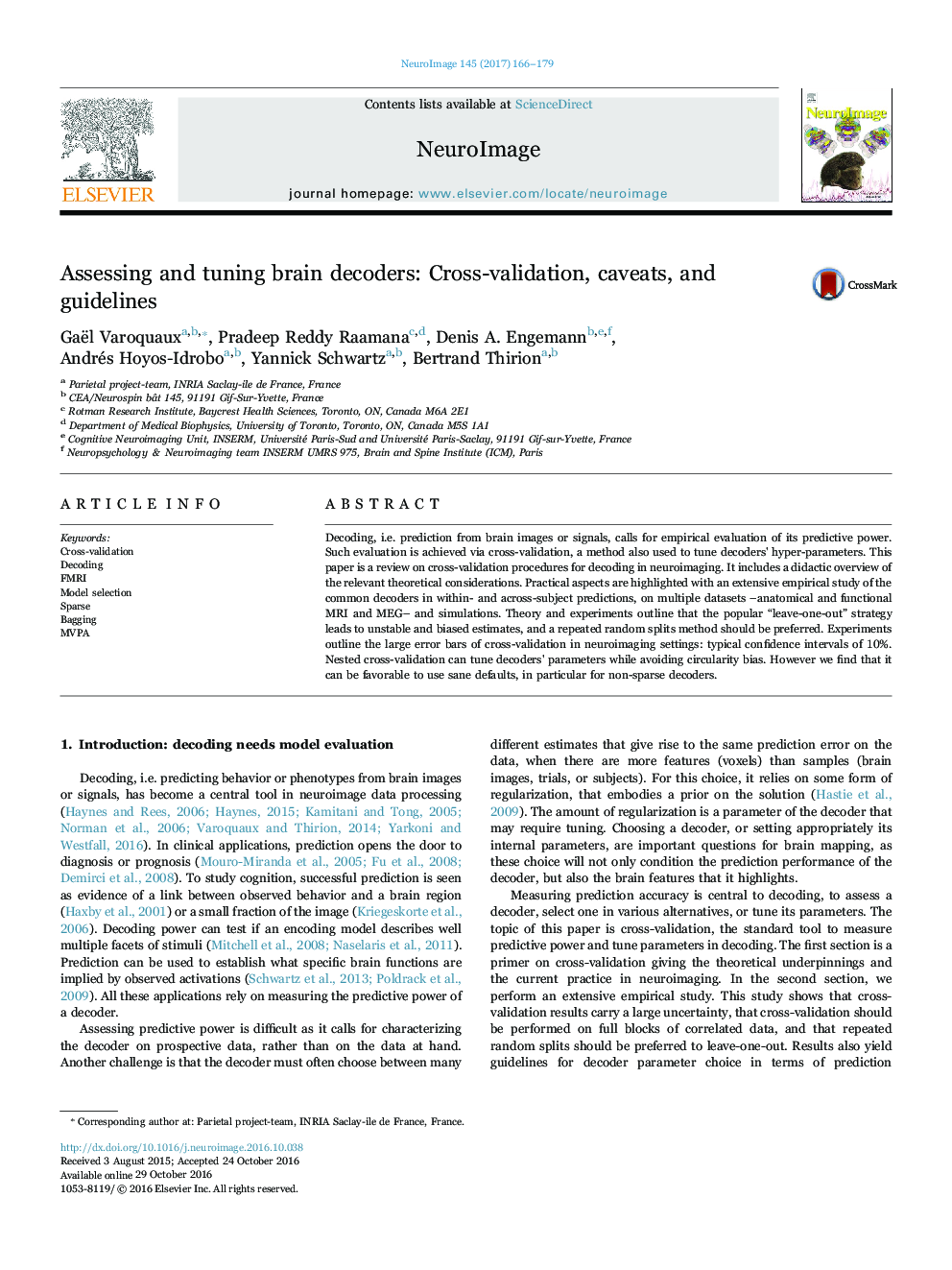| Article ID | Journal | Published Year | Pages | File Type |
|---|---|---|---|---|
| 5631569 | NeuroImage | 2017 | 14 Pages |
â¢We give a primer on cross-validation to measure decoders predictive power.â¢We assess on many datasets its practical use for decoding selection and tuning.â¢Cross-validation displays large confidence intervals, in particular leave one out.â¢Default parameters on standard decoders can outperform parameter tuning.
Decoding, i.e. prediction from brain images or signals, calls for empirical evaluation of its predictive power. Such evaluation is achieved via cross-validation, a method also used to tune decoders' hyper-parameters. This paper is a review on cross-validation procedures for decoding in neuroimaging. It includes a didactic overview of the relevant theoretical considerations. Practical aspects are highlighted with an extensive empirical study of the common decoders in within- and across-subject predictions, on multiple datasets -anatomical and functional MRI and MEG- and simulations. Theory and experiments outline that the popular “leave-one-out” strategy leads to unstable and biased estimates, and a repeated random splits method should be preferred. Experiments outline the large error bars of cross-validation in neuroimaging settings: typical confidence intervals of 10%. Nested cross-validation can tune decoders' parameters while avoiding circularity bias. However we find that it can be favorable to use sane defaults, in particular for non-sparse decoders.
Graphical abstractDownload high-res image (239KB)Download full-size image
